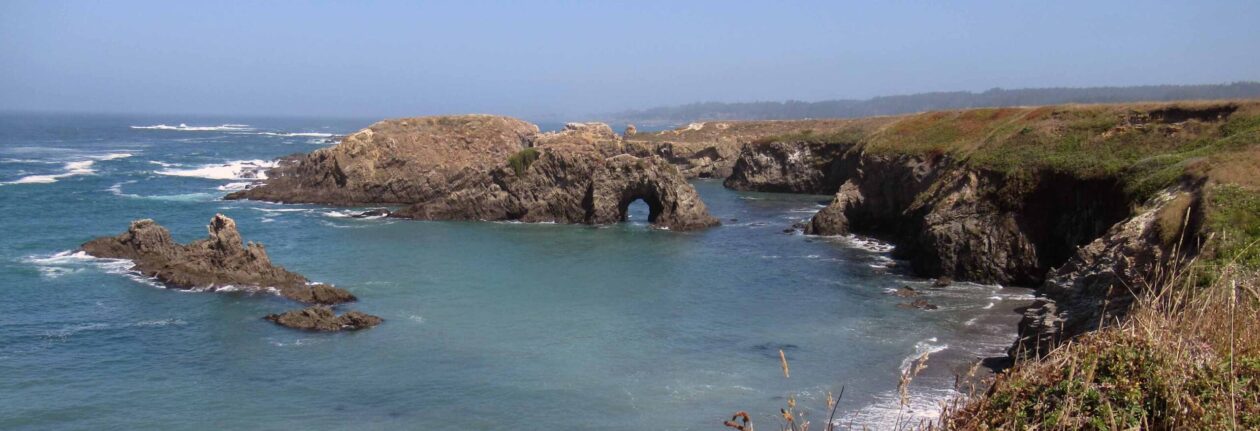Tirana, Albania
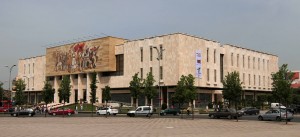

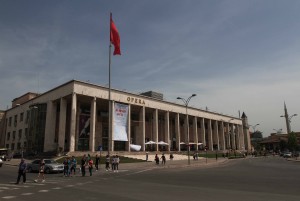
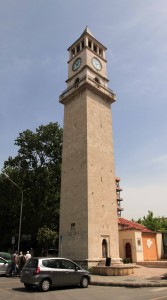
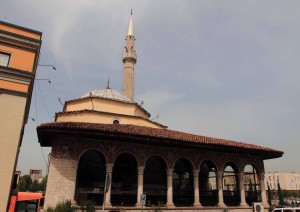
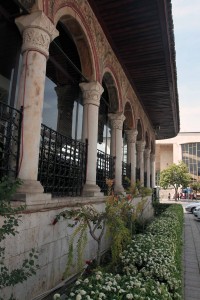
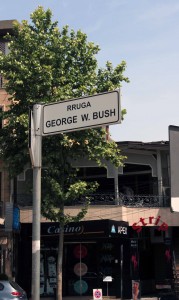
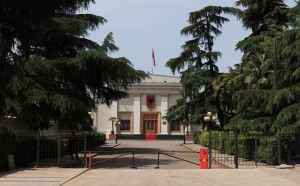
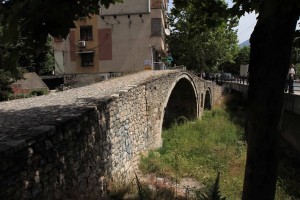
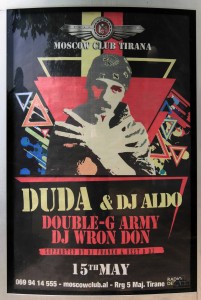
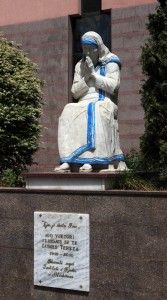
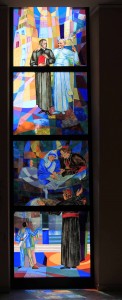
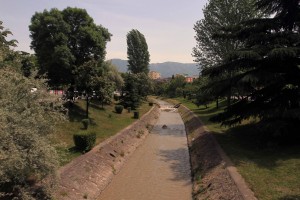
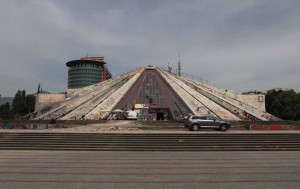
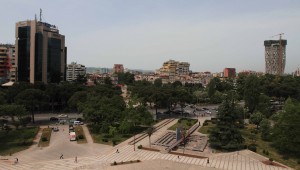
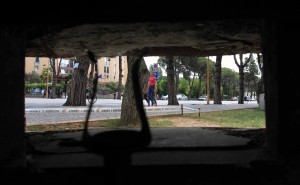
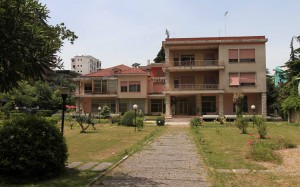
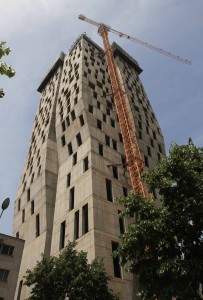
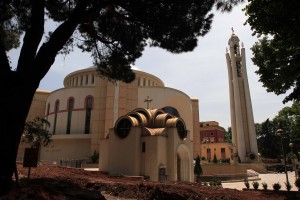
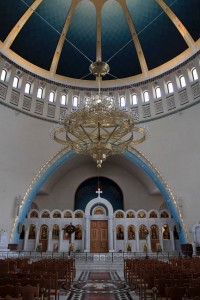
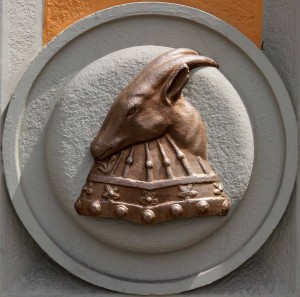
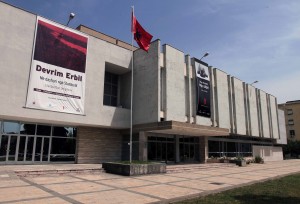
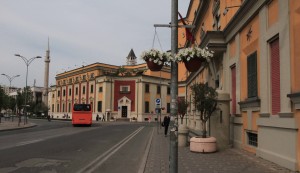
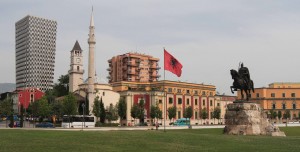
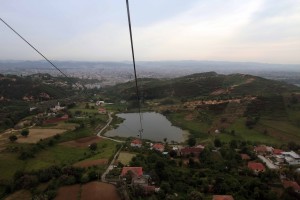
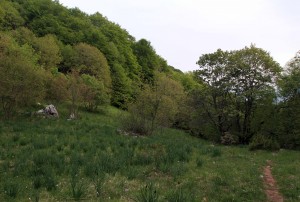
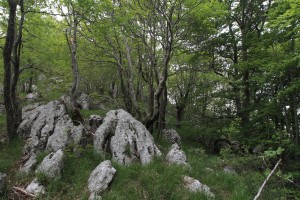
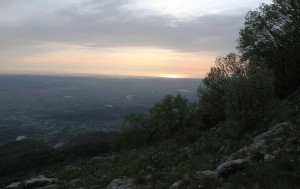
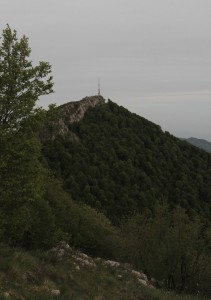
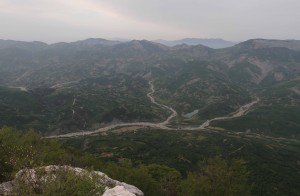
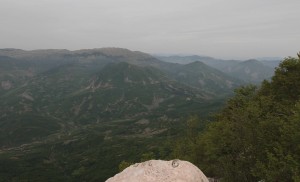
I woke up at 08:30, ate breakfast, showered, dressed, grabbed my camera, and joined the Dutch man and a Taiwanese woman staying at the hostel. Together, we walked to the National History Museum to meet up at 10:00 for the free tour around Tirana. We made it there just in time and met up with a Canadian woman, a Canadian couple (I’m pretty sure, I never asked their nationalities), and a German man (I’m basing this on his accent). After 10:00, we began our tour around the city center of Tirana. We walked through Skanderbeg Square to the Clock Tower of Tirana (built in 1822 AD) and Et’hem Bey Mosque (built in 1823 AD) – both structures were built by Haxhi Et’hem Bey. Next, we walked past some government buildings on Dëshmorët e Kombit Boulevard, which was built by Italian architects and many of the buildings were done in the Italian Neo-Renaissance style. We then walked to the National Arts Gallery (where a socialist running for mayor was having a videotaped question and answer session with some locals outside) and by the remains (i.e. a wall – if even that) of Tirana Castle. Continuing on, we passed by the Albanian Parliament building and Tanner’s Bridge; the bridge was built near the Tanners’ Mosque and was once part of the Saint George Road that linked Tirana with the eastern highlands. We then passed by some colorful apartment buildings and went inside St. Paul’s Cathedral (a modern Roman Catholic Cathedral with a statue of Mother Teresa outside and a mosaic of her inside – she was born in Skopje, Macedonia; however, she is an ethnic Albanian, so naturally Albania lays claim to her and shares in her legacy). We then walked south, over a canal, and to the “Pyramid of Tirana” (a modern pyramidal-shaped building), which was opened in 1988 AD and served as a museum dedicated to the late communist leader Enver Hoxha and his legacy; after the overthrow of communism in 1991 AD, it became a conference center and exhibition venue; during the 1999 Kosovo War, it was used as a base by NATO and humanitarian organizations; it is now used for nothing and is in a state of degradation. Once we reached the Pyramid of Tirana, we were given the opportunity walk up its steep sides. The Dutchman, the Canadian man, and I each went up to get a view of the surrounding area (the top was trashy, smelled of piss, and had human excrement up there; so I guess the pyramid is being used today as an open toilet). After taking some photographs from the top, I carefully went back down the side of the pyramid, in my shoes which have very poor grip – this means I was on my ass most of the time. Once safely back down, we walked by a bell made from used bullet casings and on to the Prime Minister’s Residence. Next, we crossed the street by the residence and visited a small bunker with slits for machine guns that was built during the Albanian communist government’s “bunkerisation” policy that lasted from 1967 to 1986 AD; during this time, over 700,000 bunkers were built throughout Albania (with an average of 24 bunkers for every square kilometer of the country) in preparation for an invasion that never came (the communist leader, Enver Hoxha, was hostile to his neighbors, still in a war with Greece since World War II, and broke off relations with the Soviet Union; so I guess he figured one of his many enemies would come sooner or later). We then walked by the former residence of Enver Hoxha and on to the Resurrection of Christ Orthodox Cathedral of Tirana and visited the inside of this cathedral. Finally, we walked back to Skanderbeg Square and concluded our walking tour, finishing at about 12:30. Immediately after the tour was finished, I tipped the guide and walked to the National Historic Museum and visited the exhibitions inside. The museum covers the entire history of Albania, but was light on artifacts (and there were far too many replica artifacts inside – I think every medieval weapon on display was a replica) and most of the information on displays was only given in Albanian; it was, nevertheless, worth a visit. Once done touring the National Historic Museum, I walked south to the National Arts Gallery and toured its exhibits; the art gallery was rather small and was mostly made up of Socialist Realism paintings (which were interesting); there was also a temporary photography exhibit showing women in many impressive bodily poses and an exhibit of paintings by Devrim Erbil (most of them depicted Istanbul, which was nice to see after visiting that city). Once done touring the art gallery (it only took about thirty minutes – it is small), I walked south, past the Pyramid of Tirana again, to the National Archaeological Museum, located on the University of Tirana’s grounds. Unfortunately, this museum closes at 15:00 and I arrived at 14:54; the guard offered to let me in for six Euros, but it didn’t look like it was worth it from what I could see (it looked very small). I then walked back to the square and visited the inside of Et’hem Bey Mosque (which had some nice frescoes inside and out) and took some more photographs of the Clock Tower. Next, I walked to the center of the square and took some photographs of the equestrian statue depicting Skanderbeg on his horse, as well as photos of the surrounding buildings. With nothing else planned for today, I walked back to the hostel and got to work, going through photos I had taken and typing today’s journal entry. However, shortly after starting to type, the French woman working at the hostel came up to me and asked if I would like to join the Aussie man, the Frenchman I had hung out with last night, and another Frenchman (with long hair) on a trip to Mount Dajt, where we would have some impressive views of the city; I decided that this was a fine idea and I put my laptop away and grabbed my camera. Then, once we were all assembled, we walked out to a bus stop and rode a local bus to the foot of the mountain. We then exited the bus and walked to the “Dajti Ekspres” – a cable car. We bought our tickets and then rode a cable car up to a hotel and restaurant area on the mountain, which also had horses for riding and pellet guns for shooting. We were determined to hike to the top of the mountain, but we arrived too late and did not give ourselves enough time to hike to the highest peak (the cable cars stop running at 20:30 and it was nearing 19:00); so, we decided to hike to Maja e Tujanit Peak (which was the shortest route we could take to the top of a peak; in retrospect, we could’ve probably hiked to the top of Mount Dajt at our pace and made it back in time, but we figured we should play it safe since it would’ve been a long walk down the mountain if we couldn’t take the cable car). We followed the trail markings and hiked through woods and some small open grassy areas before finally arriving at the top of Maja e Tujanit, where there was a giant cellular communication tower and great views of Tirana, the Adriatic Sea (far in the distance), and the Mount Dajti National Park; to the east were great views of mountains and lakes. After taking in the scenery, we hiked back down whence we came and returned to the cable car, taking it back down around 20:00.
Once back down from the mountain, the local bus was no longer running (we were told it stopped at 20:00, but I did see people still standing at the stops, so maybe it does run later) and we decided not to pay for a taxi; so we walked back to the hostel, which took us approximately forty-five minutes. Before returning to the hostel, we did stop to get dinner; the Aussie man and long-haired Frenchman each got a roasted chicken; the other Frenchman and I went back to the sausage place we ate a last night and I bought a bratwurst and a long sausage with bread and that sour cream and cheese spread they sell. When we finally received our food (it took a very long time), we walked back to the hostel and ate our dinner outside whilst drinking draught beer sold by the hostel. We then hung out with the other guests, talking and drinking together, trying to figure out what to do with this night. Eventually, we decided to go to a place called Tirana Rock that has live music. We (the two Frenchmen, the Aussie man, the Dutchman, the Albanian couple working at the hostel, the French couple working at the hostel, a woman from Manchester, the Taiwanese woman, and I) walked to this establishment and arrived after midnight; upon walking inside, we saw and heard the band playing a cover of Rammstein’s “Du Hast.” They then stopped for a while, coming back later on stage later on to play some more music after taking a long break. While at this establishment, we had some expensive (by Albanian standards – normal for the West) beers. Later on, after 01:00, we decided to switch venues and we walked to a club (at this point, the French couple returned to the hostel). After convincing the bouncer to let us in (they have a policy that each man must come in with a woman and we only had three women in our group with six of us men – they obviously made quite a few exceptions this night since there were a lot of men in the club, probably twice the number of women), we walked inside, to the second floor, and ordered our drinks (I had a whiskey on the rocks). We then proceeded to dance and get merry (i.e. drunk); the short-haired Frenchman was having a drunken blast dancing with everyone and the Taiwanese woman was having a good deal of luck dancing with some local women. Eventually, the long-haired Frenchman and the Albanian couple departed and the Dutchman (who was entrusted with the keys to the hostel since he was the most sober out of all of us), the Aussie man, the short-haired Frenchman, the Taiwanese woman, the Manchester woman, and I stayed in the club. We ended up partying until around 04:00 (the woman from Manchester left our group at some point during this time), when we decided it was time to return to the hostel. We then walked back, got ready for bed, and soon fell asleep.
I’m curious to know how much alcohol I’ve consumed on this trip. Oh well.
